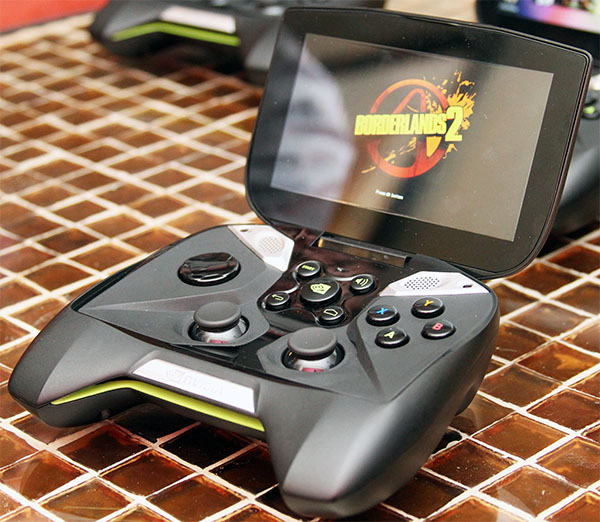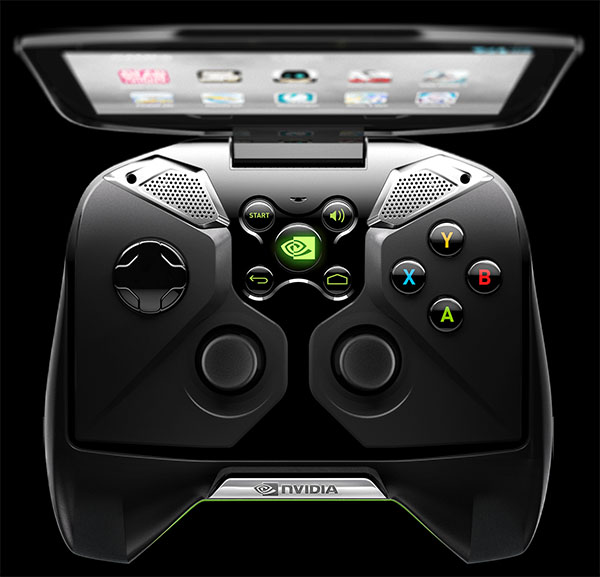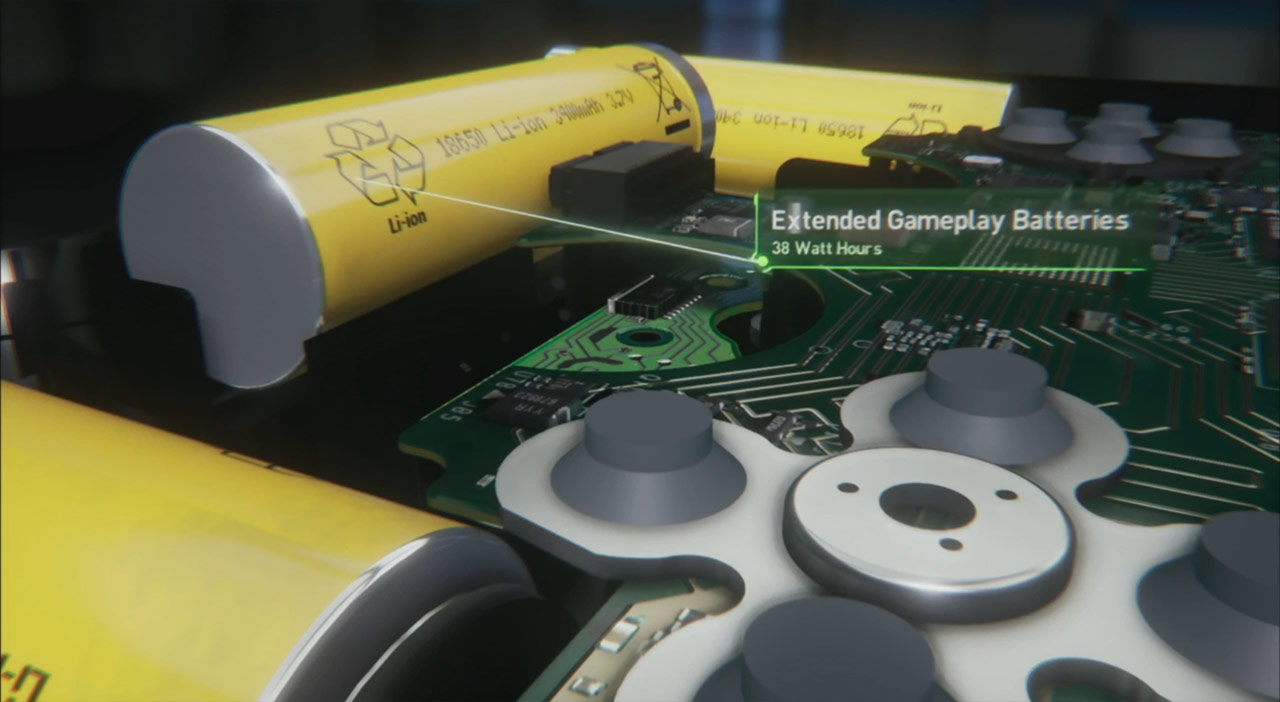Nvidia Shield: Hands-On With A Tegra 4-Based Handheld
Our first stop at this year's CES was Nvidia's suite in the Palms, where company representatives showed off pre-production versions of its Shield handheld. Chris Angelini weighs in with some of the specifics, plus his impressions of Nvidia's effort.
PC Gaming And The Shield's Secret Weapon
Hands-On: PC Gaming
During my time with the Shield, streaming Call of Duty: Black Ops II went off without a hitch. The environment was completely controlled, though—router and clients in the same room, gaming exclusively on the 5” screen, and no television set up for output.
That was actually a fairly big deal. Graphics quality on a 5” 720p display looks good enough when there’s not much room to discern “good enough” from “wow, is that native?” But when you blow the picture up on a 55” screen at 1080p from 10 feet away…well, that’s going to be telling indeed.
Compared to my first experiences with OnLive, though, playing PC games on the Shield was a more refined experience. Again, on a 5” screen, it’s difficult to judge image quality. But the output looked good. More important, I wasn’t able to perceive the latency like I did using OnLive. And because you’re accessing your Steam library, there is no paying $50 or $60 for unlimited access to a title you can’t actually download. I hated that.
At the end of the day, the biggest issue I have with Shield’s PC gaming capability is trying to play a title like Call of Duty or Battlefield 3 using joystick controls. But like I already said, I’m not a console gamer, so that’s just me. If you’re more comfortable using a game controller, you’re probably wondering how it’s even possible to navigate through PC titles on the Shield. And the answer is Nvidia employs its GeForce Experience software to map inputs on a per-game basis to the Shield’s various buttons, pad, and joysticks.
Big Battery Capacity
Let’s say Nvidia pulls it off—the company makes it possible to play PC games on its Shield and on a television, using the Shield as a controller, without significant latency or image quality degradation. What then?
Get Tom's Hardware's best news and in-depth reviews, straight to your inbox.
Well, for playing PC games, specifically, it’ll have a pretty big deal on its hands. The fact that it’s simply decoding a video stream means the array of Li-ion batteries adding up to 38 Wh of capacity should last a very long time. Jen-Hsun claimed 24 hours of video playback up on stage, which the math suggests is at least a huge challenge (that’d be less than 1.6 W of total platform power). I’ll happily stand corrected if Nvidia’s engineers pull off a full day of video playback. After all, they’re preliminarily estimating 1 W of power just sitting idle.
It’s notable that the company is using 18650 rechargeable Li-ion batteries—the same ones Tesla uses in the Roadster. Nvidia says that when it comes to Wh/dollar, the 18650s are always going to be the least expensive option thanks to high production volume and density. That’s why the Shield is able to offer so much capacity compared to, say, the Li-ion pouch batteries you find in tablets, which typically offer lower specific energy.
Less interesting to me is playing Android-based games. If that’s your thing though, Nvidia says to expect between five and 10 hours of gameplay, corresponding to 7.6 and 3.8 W of consumption. Games optimized for Tegra 4’s graphics resources are expected to exact higher power demands than those originally written for Tegra 2- or 3-based devices.
Current page: PC Gaming And The Shield's Secret Weapon
Prev Page Nvidia Shield: Presenting The Turn Next Page Tegra 4 And Shield's Future: The Prestige-
mayankleoboy1 Naughty Naughty Chris!Reply
Hogging the better handheld for yourself, and giving the inferior one to Don ;) -
jase240 Streaming games to a tablet, its awesome! Now I wonder if it would be possible to stream on 4g?!?! That would be cool!Reply -
esrever Shield is nice but probably not worth the price in the end judging by how much nvidia is pushing it as a high end product.Reply -
lradunovic77 This is end of Windows because NVIDIA and soon Steam will clearly show to the world that you don't need Windows to do gaming, but actually Linux is really good platform for it.Reply -
wolley74 the question is, why would i want to stream a game from my PC, where i can use a mouse / keyboard / multiple monitors if i wish, compared to playing it on a tiny screen with limited buttons? why?Reply -
obsama1 lradunovic77This is end of Windows because NVIDIA and soon Steam will clearly show to the world that you don't need Windows to do gaming, but actually Linux is really good platform for it.Reply
Linux is great, but you have to remember two things:
1. Devs will have to port their games to Linux, which will take a long time.
2. I don't see how you're going to convince gamers to install Linux in place of Windows on their computers, and then download their entire game library again, due Linux/Windows incompatibilities. -
dark_knight33 lradunovic77This is end of Windows because NVIDIA and soon Steam will clearly show to the world that you don't need Windows to do gaming, but actually Linux is really good platform for it.Reply
3 words: Poor....driver....support...
Where's Linus giving Nvidia the finger when you need him? Afaik, you still need a windows based PC to enable streaming of steam titles.
That being said, I look forward to the day when MSFT looses it's death grip on those O/S license fees. -
dragonsqrrl It's an interesting concept, and it's impressive that Nvidia seems to have pulled off PC title streaming so effectively, but I feel like without the ability to stream remotely Shield will be little more than a niche product. I guess that's okay since Nvidia has openly stated that Shield's target audience is relatively small, but I can't help but feel that the experience could be so much more compelling with the ability to play your PC games from anywhere with a suitably fast internet connection, even if it's potentially at the expense of some image quality and latency. That would certainly get my attention.Reply



